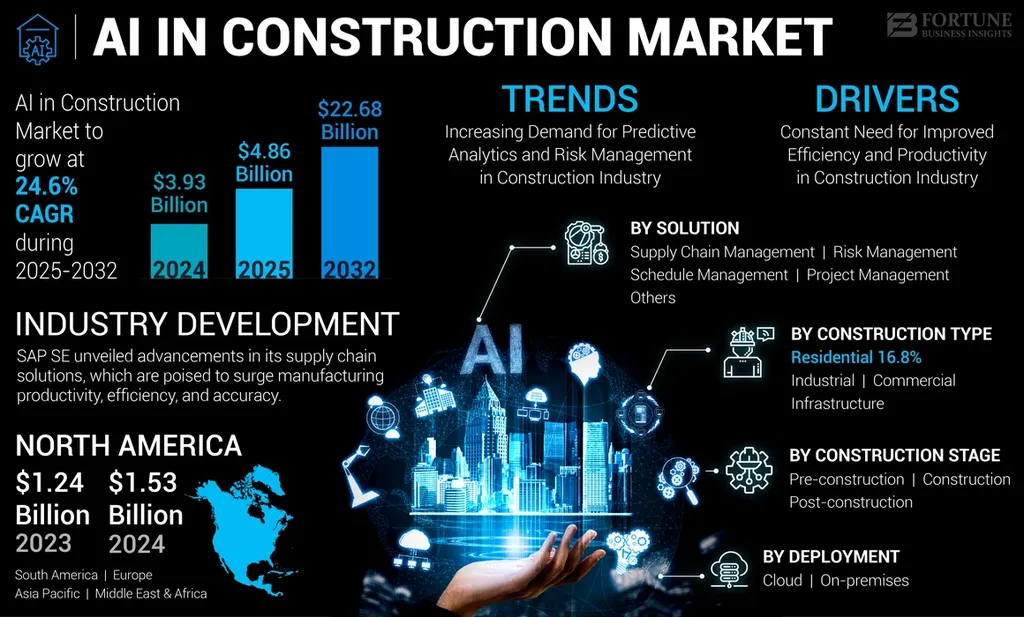The construction industry is undergoing a seismic shift, with artificial intelligence (AI) emerging as a formidable force reshaping the sector’s future. A recent report by BuiltWorlds, penned by Max Quertermus, Venture & Investment Senior Analyst, underscores the growing prominence of AI in construction tech, highlighting its transformative potential across project management, workforce management, accounting, payments, and advanced equipment and robotics. This surge in AI adoption is not merely a trend; it’s a strategic pivot that promises to redefine the built environment.
The numbers speak for themselves. Construction tech has seen a remarkable influx of venture capital (VC) funding, more than doubling the investments in building tech and surpassing infrastructure tech by over $100 million. This surge in funding is a testament to the sector’s readiness to embrace AI-driven innovations. “AI seems to have found solid footing in the built environment and particularly in the construction tech sector, where a majority of AI-related VC funding has ended up,” Quertermus notes. This influx of capital is fueling a wave of startups poised to revolutionize traditional construction practices.
While construction tech leads the charge, the building tech sector is not far behind. Although it saw relatively lower capital inflows to AI/ML startups compared to construction and infrastructure tech, the deals it did secure accounted for nearly 44% of all tracked deals in the sector. This indicates a strategic focus on high-impact investments that could yield significant returns in the long run.
In the infrastructure tech realm, AI is still in the early stages of adoption, but the appetite for the technology is palpable. Quertermus highlights the potential of AI/ML in enhancing operations through smart grids, predictive maintenance, and the seamless integration of renewable energy. “In the energy and utilities sector, AI/ML enhances operations through smart grids, predictive maintenance, and the seamless integration of renewable energy,” he writes. This integration is not just about efficiency; it’s about creating a more sustainable and resilient infrastructure.
One of the most promising areas for AI/ML integration is geospatial information systems and mapping. These technologies enable real-time modeling and visualization of infrastructure assets and risks, providing invaluable insights for decision-making. “AI/ML enables data-driven diagnostics and supports predictive and prescriptive analytics, allowing organizations to anticipate issues and optimize performance,” Quertermus explains. This capability is crucial for proactive maintenance and risk management, ensuring that infrastructure projects are completed on time and within budget.
The implications of this AI-driven transformation are profound. For construction professionals, AI offers unprecedented opportunities to streamline operations, reduce costs, and enhance safety. For investors, it presents a lucrative market ripe for innovation and growth. For society at large, it heralds a future where infrastructure is not only more efficient but also more sustainable and resilient.
However, the path forward is not without its challenges. Integrating AI into the construction sector requires a concerted effort from all stakeholders—from tech startups and investors to construction firms and policymakers. It demands a willingness to embrace change, invest in new technologies, and foster a culture of innovation.
As the construction industry stands on the precipice of this AI revolution, one thing is clear: the future of building is not just about erecting structures; it’s about constructing a smarter, more sustainable, and more resilient world. The question is no longer whether AI will transform the construction sector but how quickly and comprehensively it will do so. The time to act is now, and the opportunities are boundless.

